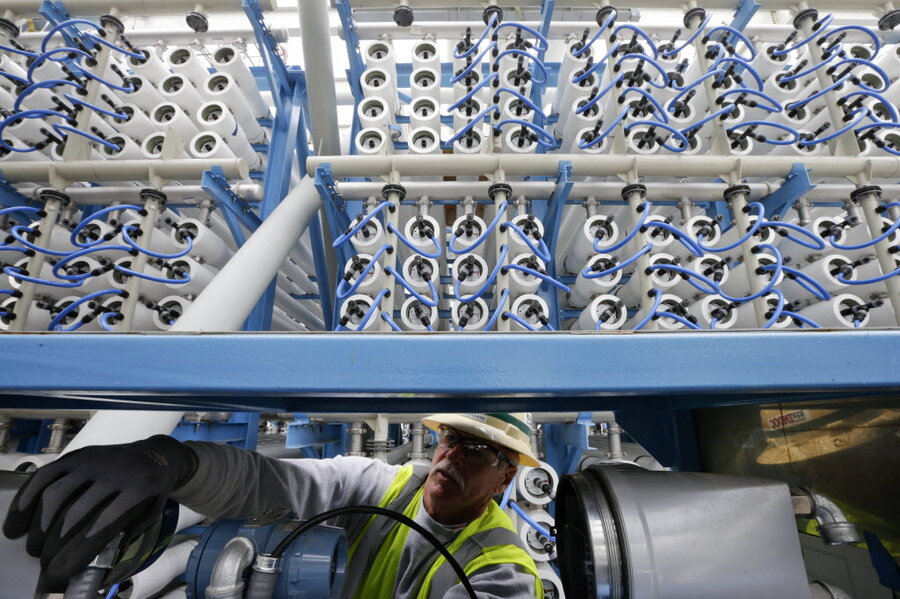Will California's drought affect hydroelectric power?
Loading...
For California, now in its fourth year of drought, the record low snowfall, in addition to the lack of rain, is beginning to hamper the state’s supply of hydroelectric energy.
This winter California received only 12 percent of its average snowpack, meaning that there will be dramatically less runoff into the rivers and dams across the Sierra Nevada this spring.
“We'll keep the lights on. We're not concerned about not having power." said Robert Weisenmiller, chairman of the California Energy Commission told the San Diego Union-Tribune. "What we're concerned about is the power is going to come from different sources not as benign" for the environment as hydroelectricity.
In 2002, California set ambitious goals for reducing its carbon footprint and, despite the continued drought, has done well meeting those goals over the past few years. But with the dams still in operation now prioritizing water for farms and cities, the administration has no choice but to turn to fossil fuels to fill the energy gap.
A study by the nonprofit Pacific Institute in Oakland, Calif., published this past week, confirmed that the increased reliance on fossil fuel has caused an 8 percent rise in the state's carbon dioxide emissions.
"Between October 2011 and October 2014, California’s ratepayers spent $1.4 billion more for electricity than in average years because of the drought-induced shift from hydropower to natural gas," said Peter Gleick, president of Pacific Institute and the report’s author, told Capital Public Radio. "In an average year, hydropower provides 18 percent of the electricity needed for agriculture, industry, and our homes. Comparatively, in this three-year drought period, hydropower comprised less than 12 percent of total California electricity generation."
This decline spells an increase in utility bills for many California residents, particularly those who benefited from the lower costs of hydroelectric power and now have to switch to the more expensive natural gas.
The drought is also affecting California’s northern neighbors, which rely even more heavily on hydroelectricity than California does. Some 60 percent of Washington state’s power and 45 percent of Oregon’s come from hydroelectric power. The governors of both states recently declared drought emergencies in sections of their states as snowpack approaches record lows.
As for California’s goal of generating 33 percent of electricity from renewable sources by 2020, Robert Oglesby, executive director of the state energy commission, does not think that the surge in natural gas power will prevent the state from reaching its goal. This is largely because hydroelectric dams divert a river's natural course, and therefore are not officially included in California's renewable energy use.
The Pacific Institute study highlights the need for finding alternatives to natural gas during drought years.
"It's [solar, wind] still a small fraction of our total electricity production, but it's growing," said Gleick. "If we can replace natural gas with solar and wind during drought years, that's a good thing."






